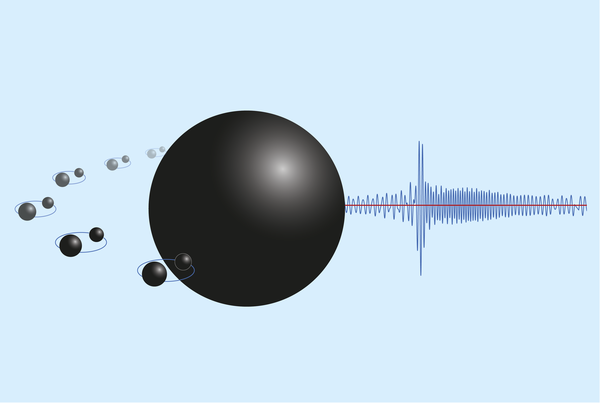It Takes Three to Tango

In the last decade, the gravitational wave observations of binary black hole coalescences in the LIGO-Virgo-KAGRA detectors have given us an invaluable amount of information on the nature of black holes and of gravity when it is at its strongest. Still, among many questions that remain open, a particularly striking one is that of binary formation. How are black holes meeting up and merging in a Universe that is so sparsely populated with stars and, presumably, also by black holes? It is thought that part of the answer lies in that some black hole binary systems form and evolve within accretion disks around supermassive black holes in galactic nuclei. These particularly dense regions of our Universe, which facilitate encounters between compact objects; moreover, the interactions of the binary with the neighbouring massive black hole can help bring them together and merge!
The dynamics and gravitational radiation from such systems are incredibly rich: gravitational waves from the binary are beamed and lensed by the supermassive partner, and may even excite its proper modes of vibration. As gravitational wave physics consolidates into a field of precision science, we may soon be able to unlock the full potential of these triple systems. First, however, we need to model them accurately. In a recent work published in Physical Review Letters, João Sieiro dos Santos, Vítor Cardoso, Maarten van de Meent, and a collaborator from IST developed the first full theoretical model of wave generation from first principles in the setup described above. Using it, they begin to unveil all the exciting rhythms of this threefold cosmic tango. They show that three-body systems are exciting physics laboratories, exhibiting interesting phenomenology from Doppler shifts due to the motion of the center of mass of the small binary, to the excitation of the characteristic oscillations of the massive black hole, like a gravitational tuning fork!
Nov. 20, 2025, 4:11 a.m.